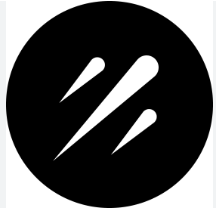
Introduction to Uplink
Uplink is a decentralized physical infrastructure network designed to provide decentralized internet connectivity. The platform aims to create better distributed and user-operated infrastructure that is more resilient and scalable. Uplink allows individuals and businesses to become providers by installing compatible hardware, such as routers, in their community spaces or business premises. Providers can then directly earn profits from the usage of the network in their coverage areas.
Unlike traditional centralized internet services, which rely on centralized data centers and large service providers, Uplink leverages decentralized connectivity, creating an infrastructure that is more resistant to downtime and centralized control. It allows users to gain access to the network in areas where coverage is available, and even mark areas in need of connectivity where Uplink has yet to provide service. This flexibility not only enhances connectivity but also empowers users to participate in the network’s growth and success.
How to Participate and Earn Rewards
To participate in Uplink’s ecosystem, users first need to create an account on the platform and pre-register their router. Any existing Wi-Fi router that is compatible with Uplink can be used, or individuals can deploy new routers to contribute to the network. Once the Uplink network goes live, providers will begin contributing to the ecosystem by offering their routers as a part of the decentralized network infrastructure. These providers will then receive rewards for each connection made through their routers.
Providers can earn rewards based on the amount of internet traffic routed through their hardware. This is a simple way to monetize existing Wi-Fi routers or set up new infrastructure to support decentralized internet services. As more users join the network, the more opportunities arise for providers to earn, creating a sustainable, mutually beneficial system for both the individuals running the hardware and those who use the network.
Furthermore, Uplink’s decentralized approach allows for greater flexibility. Individuals can participate not just by contributing hardware, but also by identifying gaps in coverage. When there are areas that Uplink hasn’t yet covered, users can mark these regions as needing coverage, which encourages the platform to expand. This crowdsourced approach to expanding internet connectivity ensures that no area is left behind.
The Benefits of Uplink
Uplink offers several key advantages over traditional internet service models. Firstly, it provides a decentralized alternative to the monopolistic structures of traditional ISPs. Since the network is built and maintained by a decentralized group of providers, it reduces the dependency on a few large corporations controlling internet access. Secondly, Uplink offers more reliable internet service, as it is less vulnerable to centralized outages or disruptions. Finally, by allowing users to contribute to the network with their own hardware, Uplink democratizes internet access, allowing anyone to participate in the creation and distribution of connectivity.
Conclusion
Uplink is an exciting project that leverages decentralized technologies to improve internet connectivity. By enabling individuals and businesses to participate in the network as providers, it creates a more resilient and inclusive internet infrastructure. The rewards system further incentivizes participation, ensuring that the network grows and expands in a sustainable way. As the network continues to evolve, Uplink has the potential to revolutionize the way we think about internet access and its distribution, offering a new and more equitable model for the future of the internet.
data statistics
Relevant Navigation


Galxe

Ape Portal

Tonkeeper

Telegram

Warpcast

OpenLoop

